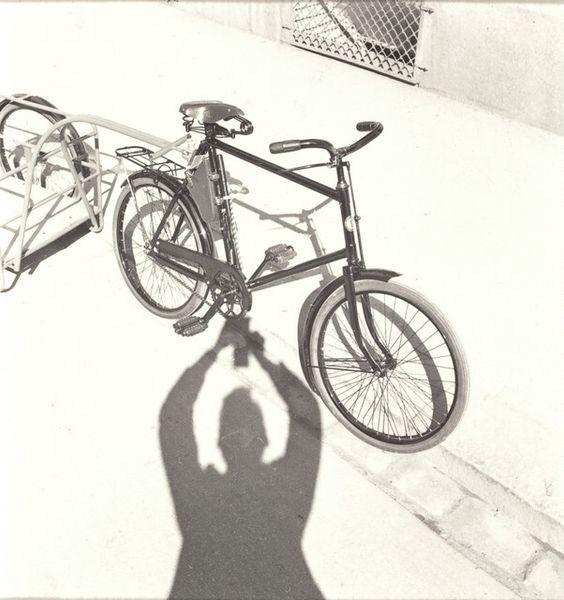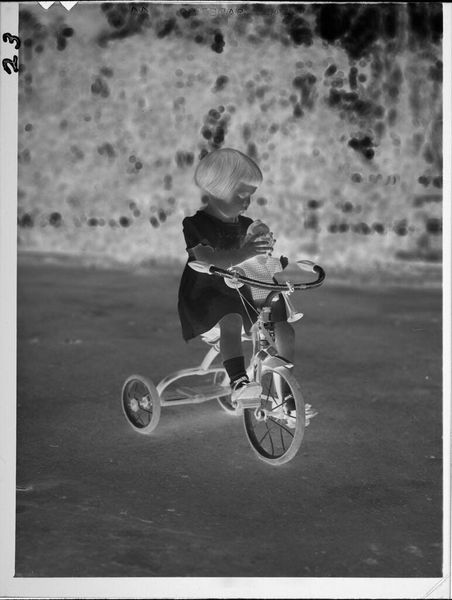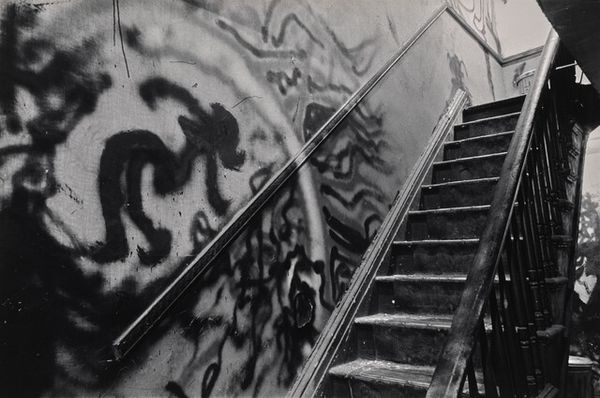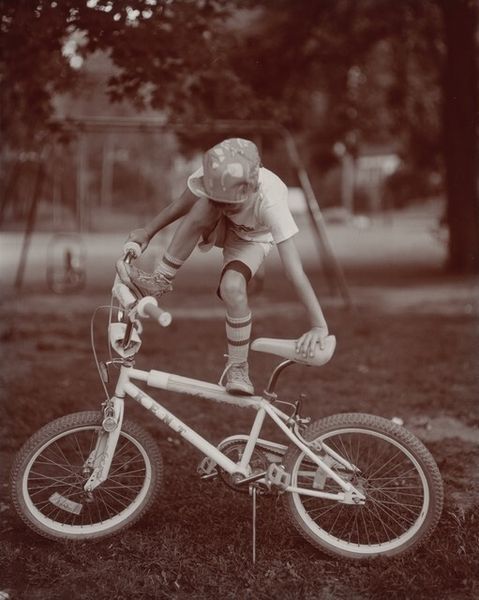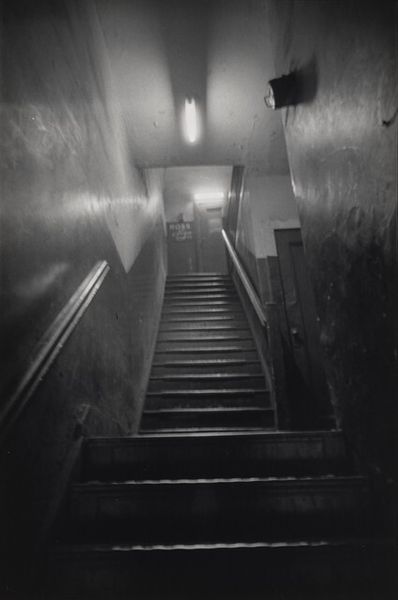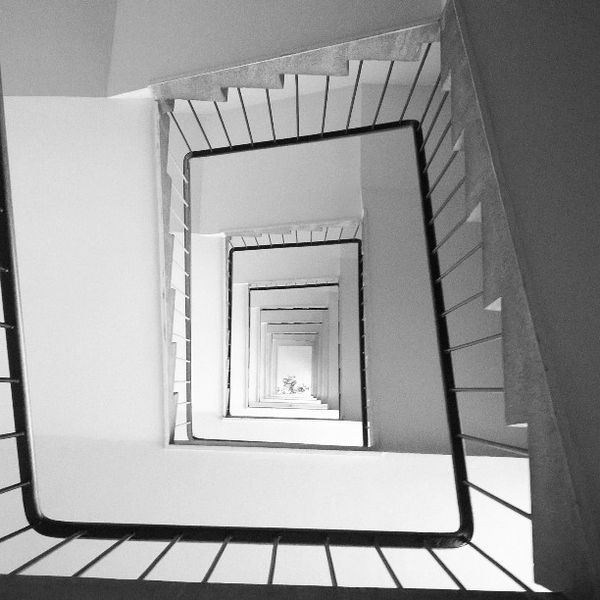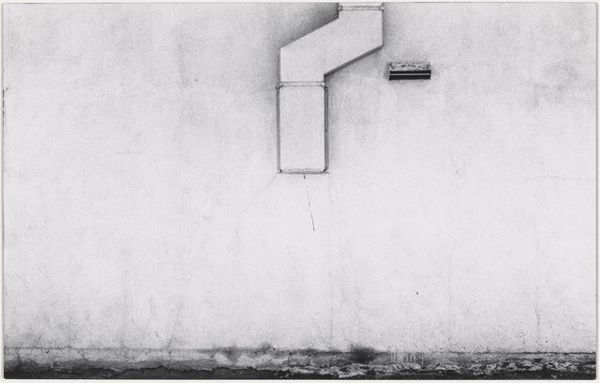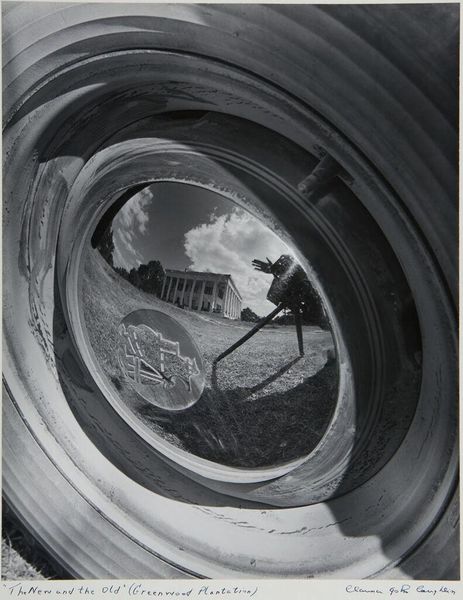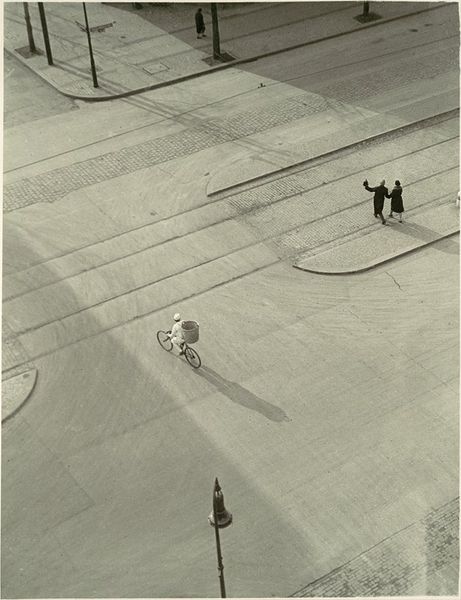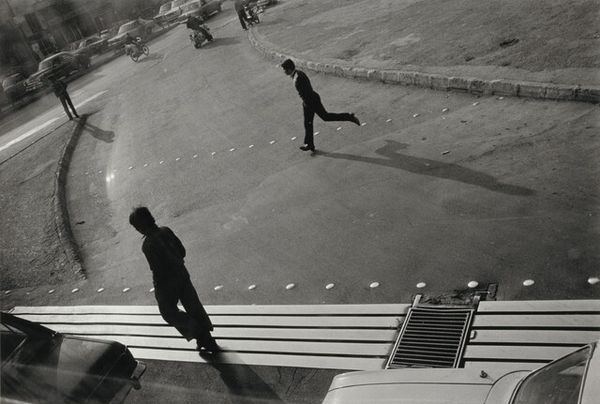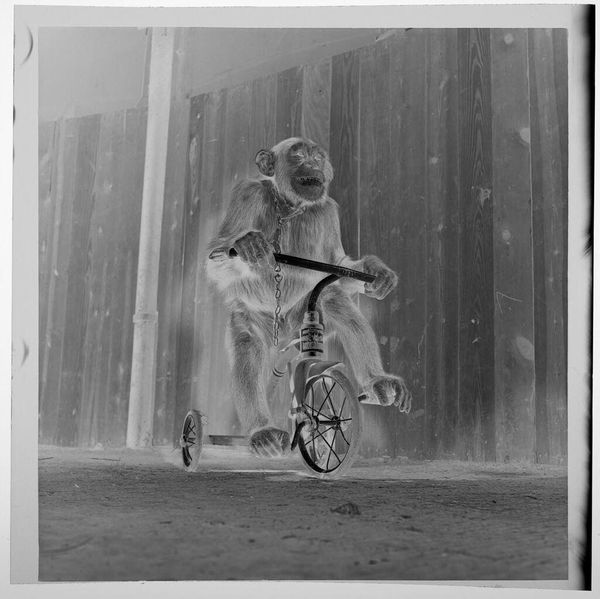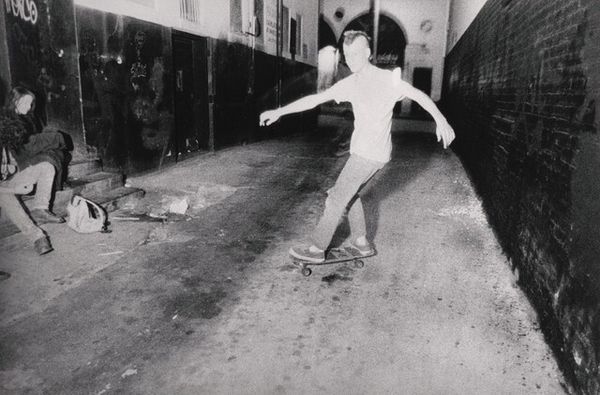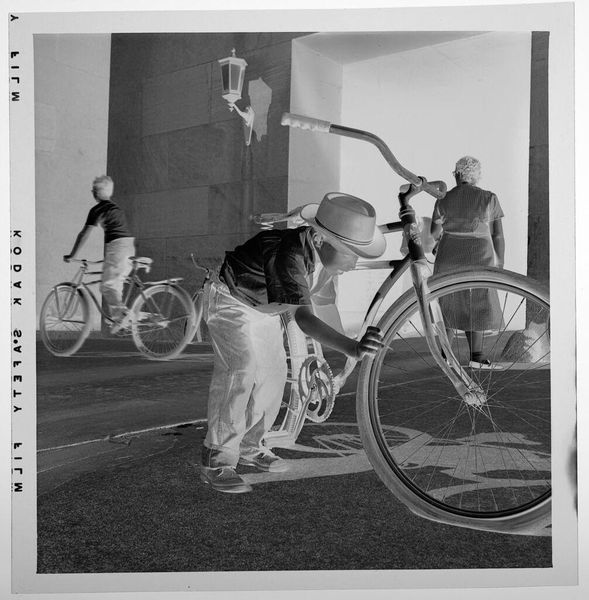
photography
#
urban landscape
#
building
#
street view
#
sculpture
#
landscape
#
street-photography
#
photography
#
geometric
#
cityscape
#
realism
#
historical building
#
monochrome
Copyright: Henri Cartier-Bresson,Fair Use
Editor: Here we have Henri Cartier-Bresson’s "Hyères, France" from 1932, a black and white photograph capturing a street scene. There's a beautiful interplay of geometric shapes formed by the staircase and the cyclist whizzing by. What captures your attention when you look at this image? Curator: It feels like stumbling upon a secret moment, doesn't it? The composition, for me, hums with quiet energy. You have this strong architectural presence – the winding staircase, a near vortex, solid and still, juxtaposed with the blurred figure of the cyclist. He's just a suggestion of movement, a fleeting whisper in contrast to the concrete permanence. What do you make of that contrast? Editor: I hadn’t thought of it as a secret moment, but I like that idea! The blur definitely gives it a sense of spontaneity and the passing of time compared to the fixed architecture. Curator: Exactly! Bresson often talked about the "decisive moment," that split-second when everything falls into place. I wonder if this photograph is not just about the scene itself but a commentary on capturing time; framing ephemerality, speed, action… Have you been to Hyères, by any chance? I recall something similar. Editor: No, I haven't. But you are making me want to book a ticket! It does have an old-world feel about it, almost frozen in time despite the movement. Curator: It's like the town breathes with an ancient history; perhaps that's where the feeling arises? Thinking about time and capturing history in a moment… Well, photography and architecture are similar, when you look closely, eh? What a paradox! I feel this moment gives one food for thought! Editor: It does, absolutely. Thanks for that insight – it's made me see it in a totally new light. Curator: Likewise! Always lovely when a conversation opens new windows of interpretation.
Comments
No comments
Be the first to comment and join the conversation on the ultimate creative platform.
